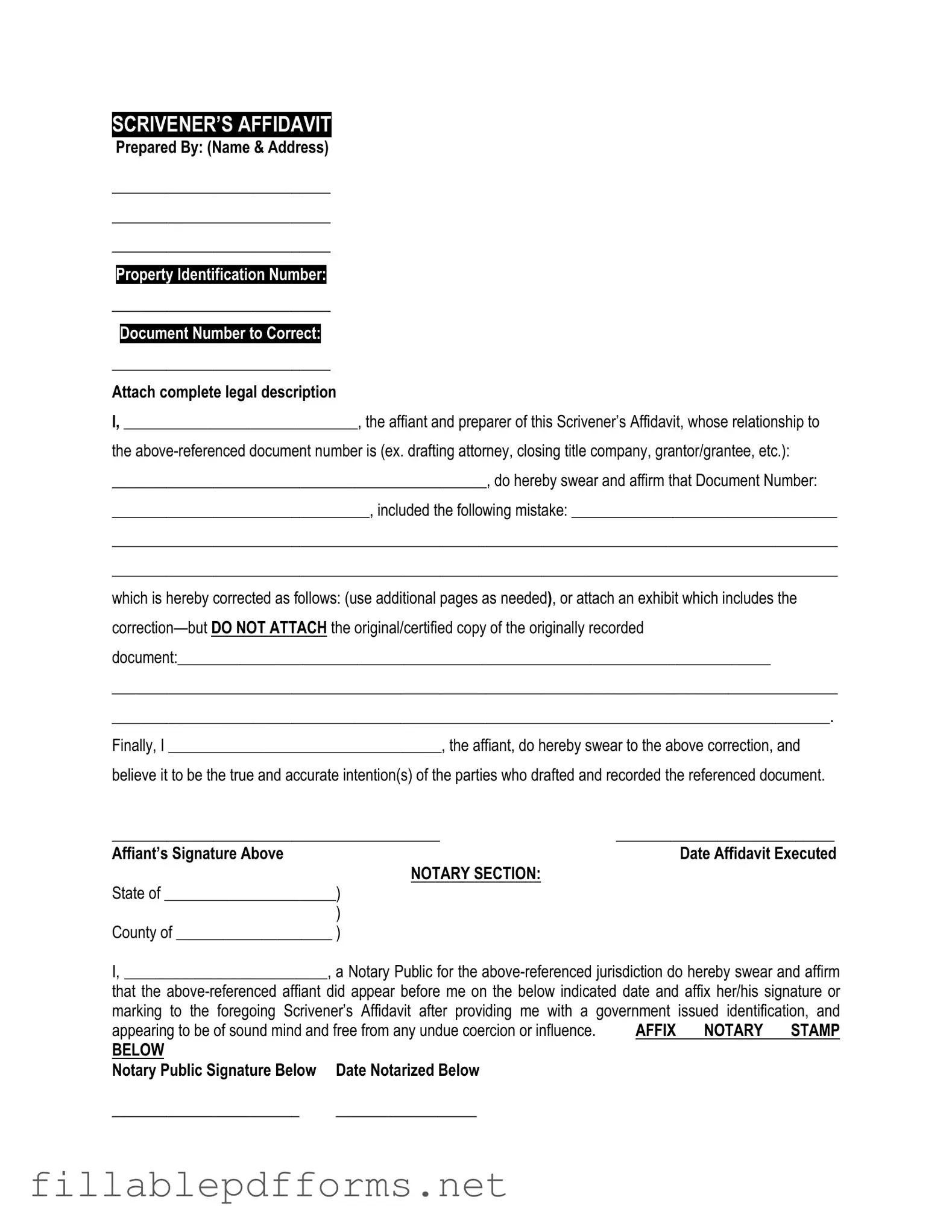The Scrivener's Affidavit is an essential legal document that plays a significant role in the realm of property transactions and real estate law. Often utilized when there are discrepancies or errors in the drafting of legal documents, this affidavit serves to clarify intentions and rectify mistakes made in the original paperwork. By providing a sworn statement from the scrivener—typically the individual who prepared the document—it helps ensure that the true meaning and intent behind the legal language are accurately represented. The affidavit can address issues such as typographical errors, misstatements, or omissions that could otherwise lead to confusion or disputes among parties involved. Additionally, it is important to note that the Scrivener's Affidavit is not merely a formality; it carries legal weight and can be crucial in upholding the integrity of property records. Understanding how and when to use this form can significantly impact the smooth execution of real estate transactions and help prevent potential legal complications down the line.
